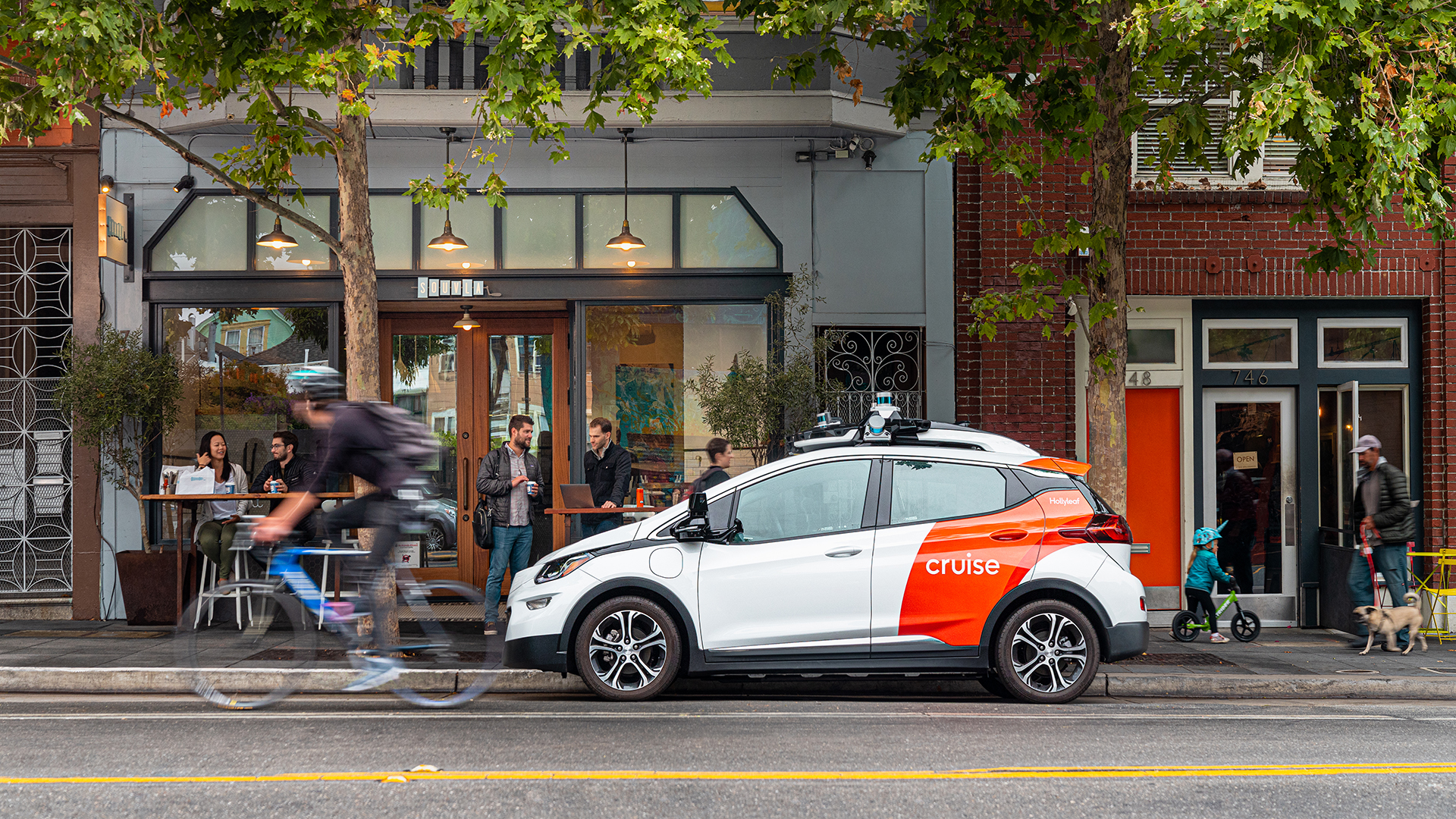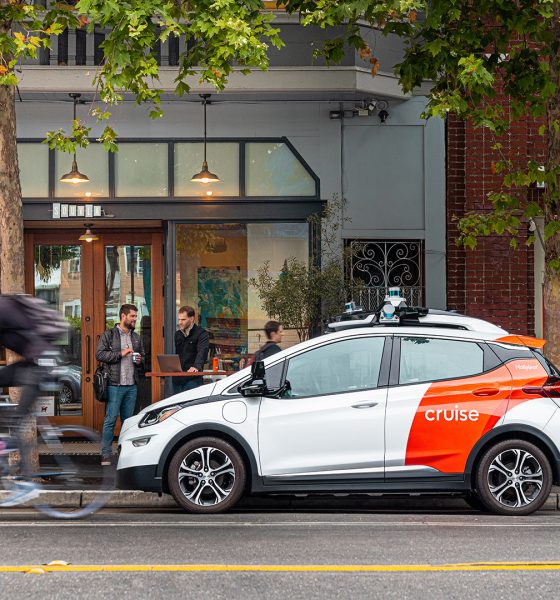

News
Cruise in hot seat amid Fire Department’s claims that robotaxis delayed responders in fatal incident
General Motors’ self-driving unit, Cruise, saw protests outside its San Francisco headquarters earlier this week. The protests come amidst the San Francisco Fire Department’s claims that some of the company’s autonomous robotaxis contributed to the tragic death of a pedestrian.
The incident, which happened on August 14, involved a pedestrian who was hit by a car in the South of Market neighborhood of San Francisco. The pedestrian’s injuries were so severe that there was heavy bleeding, and the person was no longer responding to verbal commands. It was evident that the injured pedestrian needed urgent medical care, so it was pertinent to have the person transported to a hospital as early as possible.
Public reports from the San Francisco Fire Department that were obtained by Forbes claimed that the behavior of Cruise robotaxis ended up impeding the workflow of emergency responders, so much so that critical medical care was delayed. One of the Fire Department’s reports about the incident reads as follows.
“On 8/14/2023, I was assigned to Medic 87 and responded to Incident FD23108420, at 7th Street and Harrison, for an auto vs. pedestrian. Harrison Street is 4 lanes of one-way traffic heading westbound. Upon arrival on scene, the victim was found in the (2) left lanes of Harrison Street, suffering from life-threatening injuries. SFPD and E01 had arrived prior to M87’s arrival. SFPD had a vehicle parked in the #1 lane of Harrison, and E01 had positioned its apparatus across the left 2 lanes of Harrison to shield the patient from oncoming traffic. The right 2 lanes of Harrison were blocked by (2) autonomous Cruise vehicles that had stopped and were not moving, blocking ingress and egress to the incident scene.
“The patient was suffering from life-threatening injuries, with a GCS 3, agonal respirations, and absent peripheral pulses. SFPD had applied a tourniquet to the left lower extremity to stop life-threatening bleeding from injuries sustained after being struck by a vehicle. Ventilations were assisted with a BVM, and the patient was packaged for rapid transport to a trauma center.
“While loading the patient to the ambulance, the (2) Cruise vehicles were still stopped in the right 2 lanes of Harrison, prohibiting rapid egress from the scene. SFPD had attempted manual takeover of the autonomous vehicles, but were unsuccessful. This contributed to a delay in transport with a critical trauma patient.
“SFFD members had to locate an SFPD officer and request him to move his vehicle to allow successful egress from the scene, but doing so further delayed patient care. These delays caused by (2) autonomous vehicles blocking a normal egress route from the scene contributed to a poor patient outcome, delaying the definitive care required in severe trauma cases. The patient was pronounced deceased at SFGH approximately 20-30 minutes after arrival due to severe blunt-force trauma.”
Cruise has spoken out against the Fire Department’s account of the event. In a comment to The San Francisco Standard, a Cruise spokesperson noted that “we did not impede the vehicle from getting to the hospital” and “what the fire department said is not accurate.”
“The first vehicle promptly clears the area once the light turns green and the other stops in the lane to yield to first responders who are directing traffic. Throughout the entire duration the AV is stopped, traffic remains unblocked and flowing to the right of the AV. The ambulance behind the AV had a clear path to pass the AV as other vehicles, including the ambulance, proceeded to do so. As soon as the victim was loaded into the ambulance, the ambulance left the scene immediately and was never impeded from doing so by the AV,” Cruise noted in a statement.
Cruise has reportedly provided a video to back up its claims. The video reportedly showed that while one Cruise robotaxi was indeed stopped at an intersection, there was a free lane to its right where traffic was moving. The video, which was reviewed by Forbes, did show numerous vehicles, including a small ambulance, moving through the free lane. However, the publication noted that it was not clear from the footage if the larger SFFD ambulance, which was likely transporting the severely injured pedestrian, could have navigated the area as easily.
Below are incident reports from the San Francisco Fire Department. The case in question is described in Page 68 and 69 of the document.
Cruise San Francisco Reports by Simon Alvarez on Scribd
Don’t hesitate to contact us with news tips. Just send a message to simon@teslarati.com to give us a heads-up.

News
Tesla FSD fleet is nearing 7 billion total miles, including 2.5 billion city miles
As can be seen on Tesla’s official FSD webpage, vehicles equipped with the system have now navigated over 6.99 billion miles.

Tesla’s Full Self-Driving (Supervised) fleet is closing in on almost 7 billion total miles driven, as per data posted by the company on its official FSD webpage.
These figures hint at the massive scale of data fueling Tesla’s rapid FSD improvements, which have been quite notable as of late.
FSD mileage milestones
As can be seen on Tesla’s official FSD webpage, vehicles equipped with the system have now navigated over 6.99 billion miles. Tesla owner and avid FSD tester Whole Mars Catalog also shared a screenshot indicating that from the nearly 7 billion miles traveled by the FSD fleet, more than 2.5 billion miles were driven inside cities.
City miles are particularly valuable for complex urban scenarios like unprotected turns, pedestrian interactions, and traffic lights. This is also the difference-maker for FSD, as only complex solutions, such as Waymo’s self-driving taxis, operate similarly on inner-city streets. And even then, incidents such as the San Francisco blackouts have proven challenging for sensor-rich vehicles like Waymos.
Tesla’s data edge
Tesla has a number of advantages in the autonomous vehicle sector, one of which is the size of its fleet and the number of vehicles training FSD on real-world roads. Tesla’s nearly 7 billion FSD miles then allow the company to roll out updates that make its vehicles behave like they are being driven by experienced drivers, even if they are operating on their own.
So notable are Tesla’s improvements to FSD that NVIDIA Director of Robotics Jim Fan, after experiencing FSD v14, noted that the system is the first AI that passes what he described as a “Physical Turing Test.”
“Despite knowing exactly how robot learning works, I still find it magical watching the steering wheel turn by itself. First it feels surreal, next it becomes routine. Then, like the smartphone, taking it away actively hurts. This is how humanity gets rewired and glued to god-like technologies,” Fan wrote in a post on X.
News
Tesla starts showing how FSD will change lives in Europe
Local officials tested the system on narrow country roads and were impressed by FSD’s smooth, human-like driving, with some calling the service a game-changer for everyday life in areas that are far from urban centers.

Tesla has launched Europe’s first public shuttle service using Full Self-Driving (Supervised) in the rural Eifelkreis Bitburg-Prüm region of Germany, demonstrating how the technology can restore independence and mobility for people who struggle with limited transport options.
Local officials tested the system on narrow country roads and were impressed by FSD’s smooth, human-like driving, with some calling the service a game-changer for everyday life in areas that are far from urban centers.
Officials see real impact on rural residents
Arzfeld Mayor Johannes Kuhl and District Administrator Andreas Kruppert personally tested the Tesla shuttle service. This allowed them to see just how well FSD navigated winding lanes and rural roads confidently. Kruppert said, “Autonomous driving sounds like science fiction to many, but we simply see here that it works totally well in rural regions too.” Kuhl, for his part, also noted that FSD “feels like a very experienced driver.”
The pilot complements the area’s “Citizen Bus” program, which provides on-demand rides for elderly residents who can no longer drive themselves. Tesla Europe shared a video of a demonstration of the service, highlighting how FSD gives people their freedom back, even in places where public transport is not as prevalent.
What the Ministry for Economic Affairs and Transport says
Rhineland-Palatinate’s Minister Daniela Schmitt supported the project, praising the collaboration that made this “first of its kind in Europe” possible. As per the ministry, the rural rollout for the service shows FSD’s potential beyond major cities, and it delivers tangible benefits like grocery runs, doctor visits, and social connections for isolated residents.
“Reliable and flexible mobility is especially vital in rural areas. With the launch of a shuttle service using self-driving vehicles (FSD supervised) by Tesla in the Eifelkreis Bitburg-Prüm, an innovative pilot project is now getting underway that complements local community bus services. It is the first project of its kind in Europe.
“The result is a real gain for rural mobility: greater accessibility, more flexibility and tangible benefits for everyday life. A strong signal for innovation, cooperation and future-oriented mobility beyond urban centers,” the ministry wrote in a LinkedIn post.
News
Tesla China quietly posts Robotaxi-related job listing
Tesla China is currently seeking a Low Voltage Electrical Engineer to work on circuit board design for the company’s autonomous vehicles.

Tesla has posted a new job listing in Shanghai explicitly tied to its Robotaxi program, fueling speculation that the company is preparing to launch its dedicated autonomous ride-hailing service in China.
As noted in the listing, Tesla China is currently seeking a Low Voltage Electrical Engineer to work on circuit board design for the company’s autonomous vehicles.
Robotaxi-specific role
The listing, which was shared on social media platform X by industry watcher @tslaming, suggested that Tesla China is looking to fill the role urgently. The job listing itself specifically mentions that the person hired for the role will be working on the Low Voltage Hardware team, which would design the circuit boards that would serve as the nervous system of the Robotaxi.
Key tasks for the role, as indicated in the job listing, include collaboration with PCB layout, firmware, mechanical, program management, and validation teams, among other responsibilities. The role is based in Shanghai.
China Robotaxi launch
China represents a massive potential market for robotaxis, with its dense urban centers and supportive policies in select cities. Tesla has limited permission to roll out FSD in the country, though despite this, its vehicles have been hailed as among the best in the market when it comes to autonomous features. So far, at least, it appears that China supports Tesla’s FSD and Robotaxi rollout.
This was hinted at in November, when Tesla brought the Cybercab to the 8th China International Import Expo (CIIE) in Shanghai, marking the first time that the autonomous two-seater was brought to the Asia-Pacific region. The vehicle, despite not having a release date in China, received a significant amount of interest among the event’s attendees.








